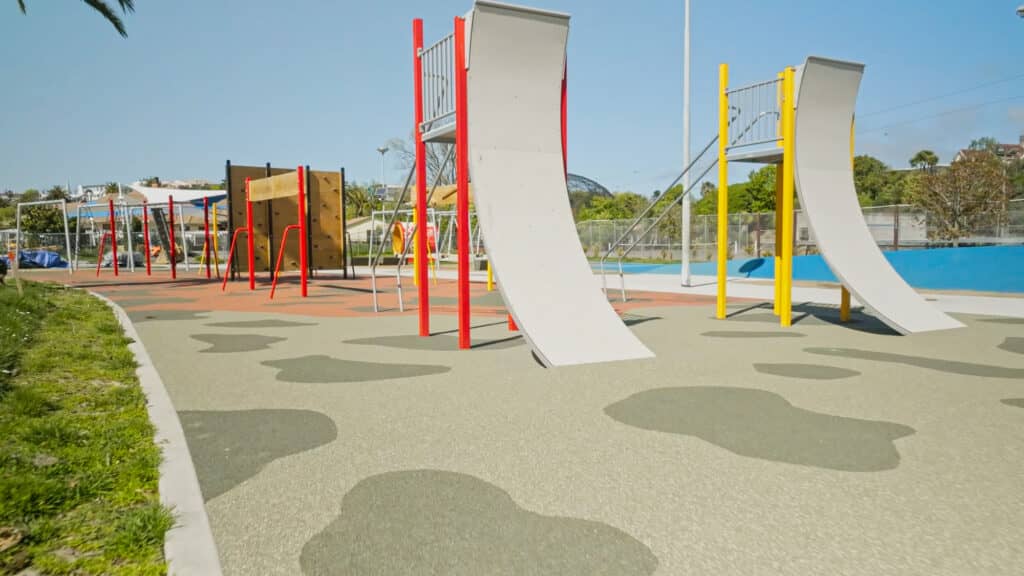When it comes to designing a playground, safety and functionality are crucial. A key component in achieving this is the choice of surfacing.
There is more to a great playground design than just cushioning falls and being durable.
It’s also about ensuring proper drainage to keep the area safe and usable, regardless of the weather.
This is where wet-pour rubber surfacing excels. In this article, we will explore the benefits of wet-pour rubber for your space.
What is Wet Pour Rubber?
Wet pour rubber is a seamless, impact-absorbing surface often found in playgrounds and recreational areas.
Its composition varies, with materials like TPV (Thermoplastic Vulcanisate) from Rosehill, EPDM (Ethylene Propylene Diene Monomer), and SBR (Styrene-Butadiene Rubber) being the most common.
All the options offer safety-compliant surfacing. The long-term durability of each varies depending on the quality of the material used in the initial manufacturing.

Is Wet Pour Rubber Right for Your Space?
This surfacing is ideal for all playground and recreational areas. Especially if accessibility is a high priority, high foot traffic is expected, and minimal maintenance is a requirement.
Wet pour rubber can be laid in various colours and patterns, transforming a plain space into an engaging, vibrant area. Themes can be developed and ground games can be included.
The Qualities of Wet Pour Rubber
- Permeability: Its porous nature allows water to pass through, preventing pooling and slippery surfaces. This feature is crucial for maintaining a safe play environment, especially in wet conditions.
- Quick Drying: After rainfall, wet pour surfaces dry rapidly, minimising downtime and keeping the area functional. It is worth noting here that the Rosehill TPV rubber granules themselves are not porous, meaning those surfaces will dry out even quicker after rain.
- Low Maintenance: This surfacing doesn’t demand the frequent upkeep that other materials do. An occasional sweep or wash to remove debris keeps it in good condition.
- Erosion Control: Wet pour rubber helps control soil erosion and any drainage issues around the playground area by allowing water to seep through.
Factors Influencing Wet Pour Rubber Quality
- Installation Quality: Proper installation is vital for optimal performance. Incorrect installation can compromise the surface’s permeability and long-term durability.
- Underlying Base: The base plays a crucial role in drainage. A well-constructed base ensures efficient water movement and drainage.
- Maintenance: Regular maintenance is necessary to prevent the surface from clogging with dirt or debris, affecting its drainage capability.
- Age and Wear: The surface may degrade over time and require repair or replacement to maintain drainage efficiency.
Conclusion
In conclusion, wet-pour rubber is an outstanding choice for playgrounds and recreational areas, especially where safety, low maintenance, and drainage are priorities.
Its permeability, quick-drying nature, low maintenance needs, and erosion control capabilities make it superior to many other surfacing options.
It can provide children with a long-lasting, safe, and aesthetically pleasing play environment when installed and maintained correctly.
Remember, wet-pour rubber’s longevity and performance largely depend on the rubber’s quality, correct installation and ongoing maintenance. Choose this innovative surfacing solution for a safer, more enjoyable playground experience.
If you need an expert opinion for your safety surfacing, contact our team at 0800 000 334 or email us at info@creospace.co.nz.

